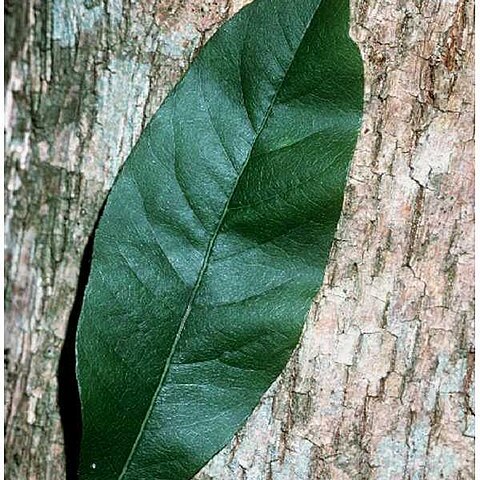Shrubs or trees, to 14 m. Stems not armed or armed, glabrous. Leaves deciduous; petiole 3-14 mm, glabrous; blade (dull to lustrous dark green adaxially), elliptic to ovate or oblanceolate, 30-122 × 13-50 mm, base acute to attenuate, margins plane, apex usually acute to acuminate, sometimes rounded, surfaces glabrous or sometimes glabrate abaxially, venation visible, midrib villous (hairs white), slightly raised, marginal vein absent. Inflorescences 7-40-flowered. Pedicels 2-10 mm, glabrous. Flowers: calyx 1.3-3.1 mm diam., sepals 5(-6), 1.6-2.4 × 0.8-1.9 mm, glabrous; petals 5(-6), white, median segment elliptic to ovate, 1.8-2 mm, lateral segments falcate, 1.1-1.7 mm; stamens 5(-6), 2.7-2.9 mm; staminodes lanceolate, 1.5-2 mm, entire; anthers sagittate-lanceolate, 1.3-1.5 mm; pistil (4-)5(-6)-carpellate; ovary (4-)5(-6)-locular, 1-1.2 mm, glabrous or pilose to hirsute; style 1.2-1.3 mm. Berries purplish black, ellipsoid to subglobose, 9-16 mm, glabrous or glabrate. Seeds 6.5-9 mm.
More
An evergreen shrub. It is shiny. It grows 6 m high. The crown is spreading and open. The trunk is 15 cm across. The bark is reddish brown and thin and smooth. The leaves are alternate or clustered on short side twigs. The leaves are pointed and 5-12 cm long by 1.2-3 cm wide. They do not have hairs. The leaves are sword shaped and widest beyond the middle. They taper to the base. They are shiny green above and paler underneath. The flowers are white and in clusters. They are 3 mm wide. They are bell shaped. The fruit are purple-black berries. They are 12 mm long. There is one large seed. The fruit pulp is edible but bitter.
Low moist soils by swamps and streams, also found on rocky bluffs. Upland, moist and floodplain forests, edges of swamps, hammocks; at elevations from 10-1,500 metres.
More
It grows along sandy creek banks and in drier forests. It grows up to 300 m altitude in the southern USA. It suits hardiness zones 6-10.


